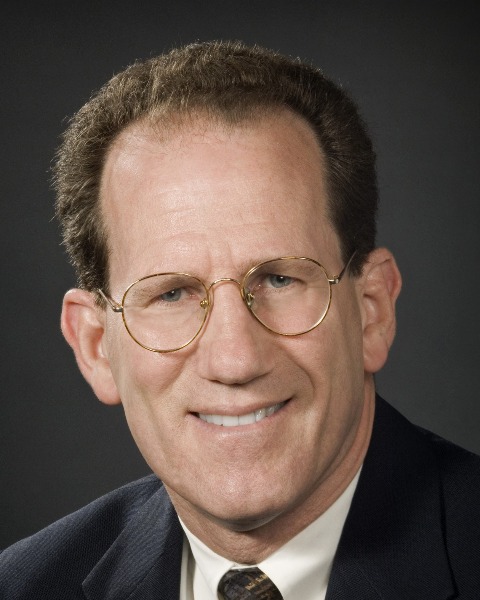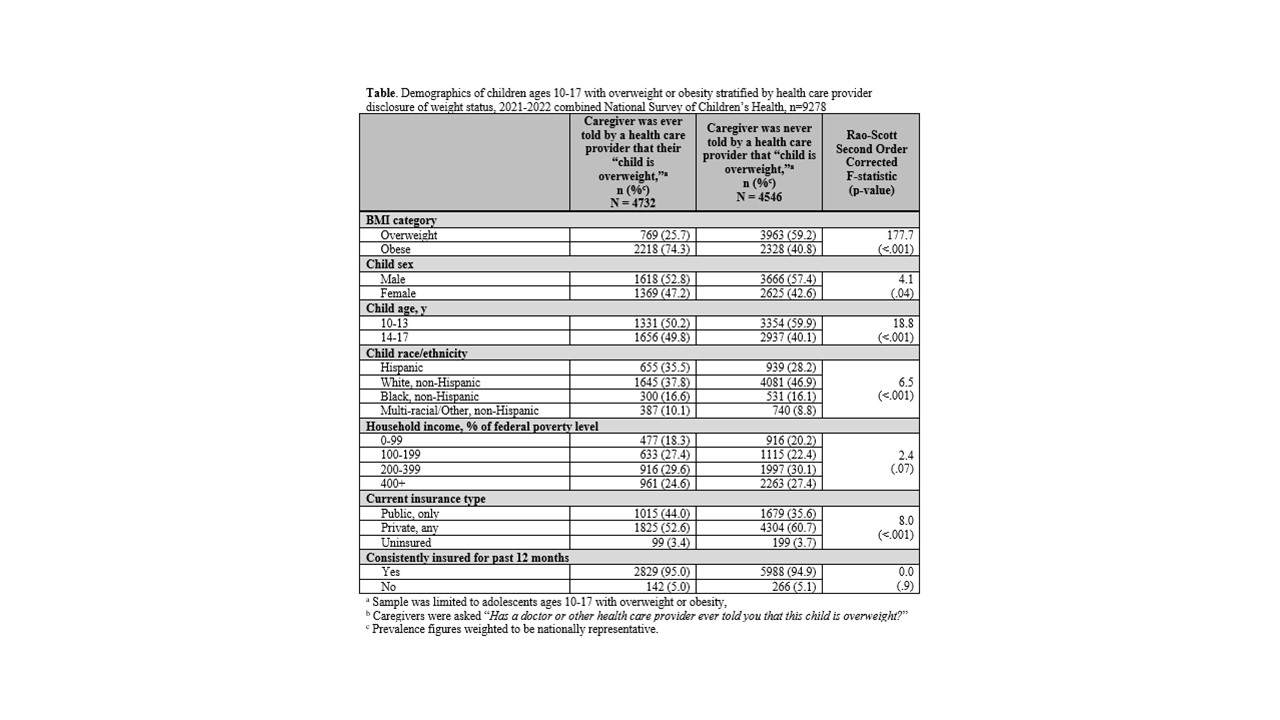Obesity 1
Session: Obesity 1
277 - Lack of Healthcare Provider Communication Regarding Excess Child Weight in the United States
Sunday, April 27, 2025
8:30am - 10:45am HST
Publication Number: 277.5960
Eli Rapoport, NYU Grossman School of Medicine, New York, NY, United States; David Rapoport, Renaissance School of Medicine at Stony Brook University, Setauket, NY, United States; Andrew Adesman, Donald and Barbara Zucker School of Medicine at Hofstra/Northwell, Roslyn, NY, United States

Andrew Adesman, MD (he/him/his)
Professor of Pediatrics
Donald and Barbara Zucker School of Medicine at Hofstra/Northwell
Roslyn, New York, United States
Presenting Author(s)
Background: More than one third of youth in the US have overweight or obesity. Caregivers with accurate perceptions of their children’s weight status are more likely to make behavioral changes related to their child’s weight, and these behavioral changes are more likely effective after discussion with a health care provider (HCP).
Objective: To assess the extent to which caregivers of adolescents with overweight or obesity report that a HCP ever told them that their child has overweight or obesity. Additionally, we aimed to identify sociodemographic predictors of HCP disclosure of child weight status.
Design/Methods: Secondary analysis of the 2021-2022 National Survey of Children’s Health was performed. Inclusion was limited to adolescents (ages 10-17) identified as having overweight (85th-94th percentile BMI) or obesity (≥95th percentile BMI). Caregivers were asked whether an HCP “ever told [them] that [their] child is overweight.” National prevalence figures for HCP disclosure of child weight status were calculated, stratifying the sample by child weight status (i.e., overweight, obese). Rao-Scott second-order corrected chi-squared tests were used to characterize associations between HCP disclosure of child weight status and sample demographics including child age, sex, race/ethnicity, household income, health insurance type, and consistency of health insurance coverage during the past 12 months. All analyses were conducted at an alpha of .05 using R and accounted for the complex survey design of the NSCH.
Results: In our sample (n=9278) (Table), after weighting, 47.9% (95% CI: 45.8%-50.0%) of participants had overweight and 52.1% (95% CI: 50.0%-54.2%) had obesity. Overall, 33.7% of adolescents in the study cohort had caregivers who reported receiving disclosure of child weight status. This rate was greater for caregivers of adolescents with obesity than for caregivers of adolescents with overweight (48.1% vs. 18.1%, p<.001). Characteristics associated with greater HCP disclosure of child weight status were female sex (p=.04), older age (i.e., 14-17 years old vs. 10-13 years old) (p= <.001), Hispanic race (p= <.001), and public (not private) insurance (p <.001). Household income and consistency of insurance were not associated with disclosure of child weight status.
Conclusion(s): The majority of caregivers of adolescents with overweight/obesity do not endorse ever having received HCP disclosure of child weight status. The low rates of disclosure identified in this study highlight the importance of identifying and addressing barriers to communication regarding excess body weight.
Table. Demographics of children ages 10-17 with overweight or obesity stratified by health care provider disclosure of weight status, 2021-2022 combined National Survey of Children’s Health, n=9278


